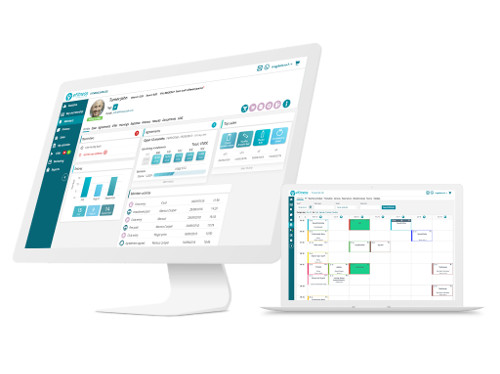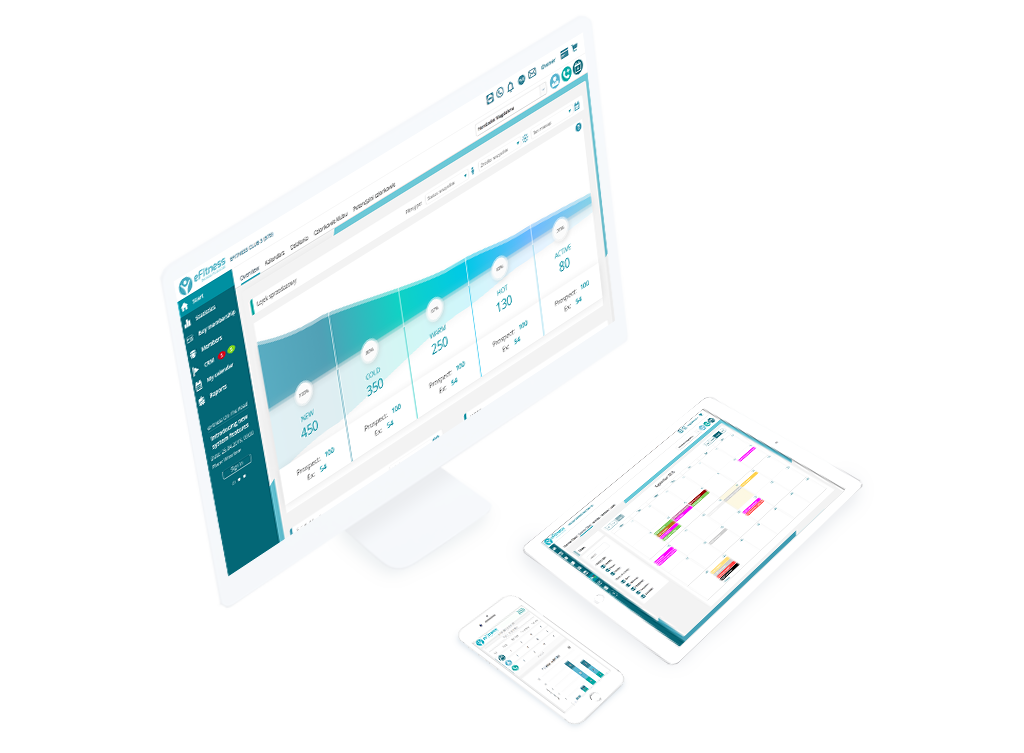American Economist Eric Fiedler once said ‘He who lives by the crystal ball soon learns to eat shattered glass.’ Thankfully, in business, you don’t need to rely on any fortune-telling orbuculum to give you an insight into what your future success may look like.
Instead, we can rely on Predictive Analytics, and make bold predictions based on statistical data, rigorous analysis and machine learning algorithms.
Within the fitness industry itself, here at eFitness, we’ve used ‘predictive analytics’ to forecast future value of a site, which we based on the amounts of units sold in ‘pre-sale’. We then used our software to reveal what the centre’s profit look like for this site in 12 months time based on their early performance? We’ve also used predictive analytics to estimate the probability of a member terminating their membership, i.e. How likely is it that this customer will cancel their membership based on their recent visit behaviour?
On the whole, there are numerous ways in which you can use Predictive Analytics but it starts with a business goal, for example, you may wish to use data to reduce queuing time for exercise machines, or you may be seeking to cut costs on your Group Exercise schedule. The process works by harnessing enormous data sets into models and from this clear, actionable outcomes are generated which support your business goal.
In today’s post, I want to share how you can use your prospect data to your advantage to foresee future sales events, which in turn, will allow you to act much quicker and more responsibly.
1. Prospect Interaction Based Forecasting
In this type of forecasting, we are looking at the stages of the sales process each customer is in. The further along in the sales process the member is, the more likely it is that they will sign up. For example, you may see that prospects who have not had an initial call are not as likely to become members with your club, compared to those who have had an appointment with you, and have been opening recent emails.
Once you’ve chosen a ‘reporting period’, which within the fitness industry is often a week to a month, you just multiply each deal’s potential value by the probability that it will close based on the last interaction. So, let’s take the example of a premium gym.
Say Premium Gym X charges £75 per month on a 12-month agreement plus a £25 joining fee then their total value will be £925 (£75 x 12) if they have a 20% likelihood of converting that prospect based on the last current interaction, then their forecasted amount would be £185. Of course, Premium X may well have learned that on average, 15% of their annual subscribers do not see out their full contractual value, so their actual end value for this particular prospect is £157.25. If Premium X were to do this with every prospect in your system, then they’d get an overall forecast of projected sales revenue.
The issue with this type of forecasting is that the results can be inaccurate as this method doesn’t account for the ‘longevity of the prospect’, in other words, if you have a prospect who has been in your system for 3 months and has had an appointment and a tour at your gym, then they will be treated the same as a prospect that’s only recently been added and has also had an appointment and a tour, even though actually, the prospect who is more recent may be more likely to join than this ‘stale’ prospect. This is why it is so crucial that your membership consultants regularly take care of ensuring their prospect and lead data is up to date, which is not always easy.
It may also be worth noting that this type of forecasting may be over-reliant on historical data, as you are relying on the percentage likelihood of closing the prospect based on which stage of the process they are in.
If you’re a gym that is either brand new or constantly trying new things such as different prices, differently packaged memberships with Personal Training bolt-ons, and even different ways of communicating to members, then it becomes tough to pinpoint exactly what that percentage is if there is either no ‘historical data’ with such new added variables being in place.
2. Length of Sales Cycle Forecasting
This is a similar forecasting method to Prospect Interaction Forecasting, but rather than looking at the stages of the sales process, it uses the average length of previous sale cycles to predict the likelihood of conversions. For instance, if the average sales cycle within your fitness facility lasts 40 days, and your membership consultant has been in contact with a new prospect for 8 days, then your forecast might suggest they’re 20% likely to close the membership today, regardless of the interactions received.
A plus point of this is the technique relies solely on objective data, rather than subjectivity of the salesperson. You might have a membership consultant who feels like their prospect is ready to buy, so they try to close them over the phone, but the ‘Length of Sales Forecast’ may state otherwise.
However, an issue with this type of forecasting is that it doesn’t take into account the ‘buying state’ of a customer, as it only works on averages and not individual interactions and customers.
There are advantages to this type of forecasting though. This technique can take into account the original source of the prospect, for example, your data may show that ‘referrals’ have an average sale cycle of 4 days rather than 40, a ‘Walk-In’ may have an average sale cycle of 10 days, whereas a lead obtained from a Corporate Health and Wellness show may take 60 days. You can make calculations by average sales length based on each source. It again must be noted that with this in mind, your sales teams and marketing channels must track accurately how prospects entered your ‘pipeline’.
3. Historical Forecasting
An easy way to predict how many memberships you’ll sell in a month is to look at the matching time period from the previous year and assume based on all the latest variables that your results will be equal or greater than those results.
For example, if you collectively made £15,000 in monthly recurring revenue in October, and that generally, your gym sees a consistent increase in sales by 2% each month because it is still in a growth phase, then you may expect to make £15,300 the following month, in November.
It is all well and good doing this, however in the fitness industry you must take into account seasonality, it’s no use looking at your sales units from August to September if you know that your facility is largely student-focused and September is typically a promising month for you. Similarly, you must also take into account current trends. For example, the COVID-19 virus that everyone is worried about at the moment may have a negative effect on gym sales as people don’t want to be in crowded places, touching things others have touched. Historical forecasting may not allow for this.
The other issue with Historical Forecasting is that it assumes the buyer demand is constant, yet we know that there will come a point where you will hit a ‘maturity’ point within your gym’s ‘product life cycle’. This is the point at which everyone you want to know about your Health Club knows about it and everyone who wants to try it has tried it. For gyms located in small towns where there is not much movement in and out, the maturity point will arrive much quicker. If you are not mindful of this, then this model doesn’t really work for you.
It is much more advisable to use historical demand as a benchmark rather than a foundation of your sales forecast.
4. Multi-Variable Analysis
By far the most comprehensive forecasting method are the ones which use several of the factors outlined in this post, such as historical data, the probability of a member signing up based their average sales cycle length and the probability of the member signing up based on where they are in the sales process. Multi-Variable analysis, in particular, does this, alongside taking into account individual sales-rep performance.
Imagine you have two membership consultants, the first one (Membership Consultant A) has a show ratio of 90%, meaning for every appointment booked in, 90% of them turn up. She also has a close ratio of 75%, meaning if she has 100 prospects in a month who have an appointment with her, 75 of them become members ‘post-tour. The other membership consultant (Membership Consultant B) meanwhile has a show ratio of 60%, and a close-ratio of 40%.
Based on this data, if both membership consultants have 500 leads for the month, and the average monthly revenue from gained from each new joiner is £21.99, then Membership Consultant A will likely make 337 sales and thus £7,410 in monthly revenue whereas Membership Consultant B will likely make 120 sales and thus £2,638 in monthly revenue.
This type of forecast will clearly show this, and can, therefore, be extremely accurate for gyms who work with membership consultants, however, it can become difficult to predict if your gym has a hybrid sales model where prospects can join both online and in-club, which tends to be the case for many operators today.
Final words
Data-driven sales forecasting gives you much greater control over your operations, it helps you avoid the pitfalls, jump the hurdles and can inspire and encourage your team members to hit their targets. In this modern age, a data-driven sales forecasting is a must-have to drive your business in a productive manner. The great news is that with eFitness, you can utilise all your data, and what’s more, through Machine learning algorithms, you can get ahead of the competition whenever you are ready.






